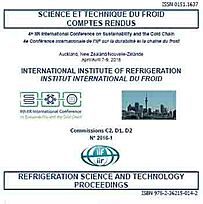
Summary
Hericium erinaceus, also called Lion's Mane Mushroom (LMM), is a precious mushroom with a spherical fruit body and needle shaped mycelium. But the needle shaped mycelium of fresh mushroom is so tender that it is prone to damage during harvest and storage, resulting in browning and autolysis. In this article, the main reason of fresh LMN browning under different temperature was studied. The browning can be inhibited effectively at 1?. Polyphenols of LMN, isolated and identified by LC-ESI-MS, were mainly L- dopa. During the storage, the activity of antioxidant enzymes including Superoxide dismutase (SOD) activity and catalase (CAT) was higher in samples at 1?. And the higher content of non-enzyme substances including ascorbic acid (AsA) and glutathione (GSH) was also found in samples at 1?. It was likely that both these antioxidant enzymes and non-enzyme substances contributed to the antioxidant ability of LMM resulting in the inhibition of oxidation browning and enzymatic browning.
Available documents
Format PDF
Pages: 8
Available
Public price
20 €
Member price*
Free
* Best rate depending on membership category (see the detailed benefits of individual and corporate memberships).
Details
- Original title: Mechanism of inhibiting fresh Hericium erinaceus browning at low temperature.
- Record ID : 30017493
- Languages: English
- Source: 4th IIR International Conference on Sustainability and the Cold Chain. Proceedings: Auckland, New Zealand, April 7-9, 2016.
- Publication date: 2016/04/07
- DOI: http://dx.doi.org/10.18462/iir.iccc.2016.0049
Links
See other articles from the proceedings (63)
See the conference proceedings
Indexing
-
The impact of storage temperature on postharves...
- Author(s) : SUN L., ZHANG Q., LIU S., et al.
- Date : 2019/08/24
- Languages : English
- Source: Proceedings of the 25th IIR International Congress of Refrigeration: Montréal , Canada, August 24-30, 2019.
- Formats : PDF
View record
-
Modified atmosphere packaging to extend shelf l...
- Author(s) : TABOADA-RODRÍGUEZ A., SÁNCHEZ-RUBIO M., CAVA-RODA R., et al.
- Date : 2015/08/16
- Languages : English
- Source: Proceedings of the 24th IIR International Congress of Refrigeration: Yokohama, Japan, August 16-22, 2015.
- Formats : PDF
View record
-
Fractal structure evolution of moisture-contain...
- Author(s) : CHAI L., LIU B., MENG Y., et al.
- Date : 2019/08/24
- Languages : English
- Source: Proceedings of the 25th IIR International Congress of Refrigeration: Montréal , Canada, August 24-30, 2019.
- Formats : PDF
View record
-
Postharvest treatment with melatonin increase c...
- Author(s) : MEDINA SANTAMARINA J., MADALINA ILEA M. I., RUIZ ARACIL M. C., SERRANO MULA M., MARTÍNEZ-ROMERO D., CASTILLO S., GUILLÉN F.
- Date : 2022/04
- Languages : English
- Source: XI Congreso Ibérico y IX Congreso Iberoamericano de Ciencias y Técnicas del Frío, CYTEF 2022.
- Formats : PDF
View record
-
Effectiveness of CIPC (chloropropham) in improv...
- Author(s) : KUMAR D., KAUL H. N., SINGH J.
- Date : 1993/03/01
- Languages : English
View record
